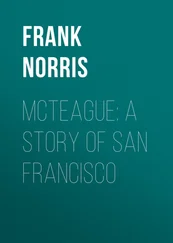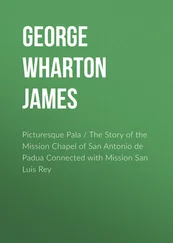Trumbull White - Complete Story of the San Francisco Horror
Здесь есть возможность читать онлайн «Trumbull White - Complete Story of the San Francisco Horror» — ознакомительный отрывок электронной книги совершенно бесплатно, а после прочтения отрывка купить полную версию. В некоторых случаях можно слушать аудио, скачать через торрент в формате fb2 и присутствует краткое содержание. Жанр: geography_book, foreign_antique, foreign_prose, на английском языке. Описание произведения, (предисловие) а так же отзывы посетителей доступны на портале библиотеки ЛибКат.
- Название:Complete Story of the San Francisco Horror
- Автор:
- Жанр:
- Год:неизвестен
- ISBN:нет данных
- Рейтинг книги:4 / 5. Голосов: 1
-
Избранное:Добавить в избранное
- Отзывы:
-
Ваша оценка:
- 80
- 1
- 2
- 3
- 4
- 5
Complete Story of the San Francisco Horror: краткое содержание, описание и аннотация
Предлагаем к чтению аннотацию, описание, краткое содержание или предисловие (зависит от того, что написал сам автор книги «Complete Story of the San Francisco Horror»). Если вы не нашли необходимую информацию о книге — напишите в комментариях, мы постараемся отыскать её.
Complete Story of the San Francisco Horror — читать онлайн ознакомительный отрывок
Ниже представлен текст книги, разбитый по страницам. Система сохранения места последней прочитанной страницы, позволяет с удобством читать онлайн бесплатно книгу «Complete Story of the San Francisco Horror», без необходимости каждый раз заново искать на чём Вы остановились. Поставьте закладку, и сможете в любой момент перейти на страницу, на которой закончили чтение.
Интервал:
Закладка:
Under a tree on the broad lawn of the children’s playground a baby was born. By good luck there was a doctor there, and the women helped out, so that the mother appeared to be safe. They carried her later to the children’s building in the park and did their best to make her comfortable.
All night wagons mounted with barrels and guarded by soldiers drove through the park doling out water. There was always a crush about these wagons and but one drink was allowed to a person.
Separate supplies were sent to the sick in the tents. The troops allowed no camp fires, fearing that the trees of the park might catch and drive the people out of this refuge to the open and windswept sands by the ocean.
The wind which had saved the heights came cold across the park, driving a damp fog, and for those who had no blankets it was a terrible night, for many of them were exhausted and must sleep, even in the cold. They threw themselves down in the wet grass and fell asleep.
When the morning came the people even prepared to make the camp permanent. An ingenious man hung up before his little blanket shelter a sign on a stick giving his name and address before the fire wiped him out. This became a fashion, and it was taken to mean that the space was preempted.
Toward midnight a black, staggering body of men began to weave through the entrance. They were volunteer fire fighters, looking for a place to throw themselves down and sleep. These men dropped out all along the line and were rolled out of the driveways by the troops.
There was much splendid unselfishness there. Women gave up their blankets and sat up or walked about all night to cover exhausted men who had fought fire until there was no more fight in them.
CHAPTER IV.
TWENTY SQUARE MILES OF WRECK AND RUIN
Fierce Battle to Save the Famous Ferry Station, the Chief Inlet to and Egress from San Francisco – Fire Tugs and Vessels in the Bay Aid in Heroic Fight – Fort Mason, General Funston’s Temporary Headquarters, has Narrow Escape – A Survey of the Scene of Desolation.
WHEN darkness fell over the desolate city at the end of the fourth day of terror, the heroic men who had borne the burden of the fight with the flames breathed their first sigh of relief, for what remained of the proud metropolis of the Pacific coast was safe.
This was but a semi-circular fringe, however, for San Francisco was a city desolate with twenty square miles of its best area in ashes. In that blackened territory lay the ruins of sixty thousand buildings, once worth many millions of dollars and containing many millions more.
The fourth and last day of the world’s greatest conflagration had been one of dire calamity and in some respects was the most spectacular of all. On the evening of the third day (Friday) a gale swept over the city from the west, fanned the glowing embers into fierce flames and again started them upon a path of terrible destruction.
The fire which had practically burnt itself out north of Telegraph Hill was revived by the wind and bursting into a blaze crept toward the East, threatening the destruction of the entire water front, including the Union ferry depot, the only means of egress from the devastated city.
The weary firemen still at work in other quarters of the city were hastily summoned to combat the new danger. Hundreds of sailors from United States warships and hundreds of soldiers joined in the battle, and from midnight until dawn men fought fire as never fire had been fought before. Fire tugs drew up along the water front and threw immense streams of water on to the flames of burning factories, warehouses and sheds.
Blocks of buildings were blown up with powder, guncotton, and dynamite, or torn down by men armed with axes and ropes. All night long the struggle continued. Mayor Schmitz and Chief of Police Dinan, although without sleep for forty-eight hours, remained on the scene all night to assist army and navy officers in directing the fight.
At 7 o’clock Saturday morning, April 21, the battle was won. At that hour the fire was burning grain sheds on the water front about half a mile north of the Ferry station, but was confined to a comparatively small area, and with the work of the fireboats on the bay and the firemen on shore, who were using salt water pumped from the bay, prevented the flames from reaching the Ferry building and the docks in that immediate vicinity.
On the north beach the fire did not reach that part of the water front lying west of the foot of Powell street. The fire on the water front was the only one burning. The entire western addition to the city lying west of Van Ness avenue, which escaped the sweep of flame on Friday, was absolutely safe.
Forty carloads of supplies, which had been run upon the belt line tracks near one of the burned wharves, were destroyed during the night.
A survey of the water front Saturday morning showed that everything except four docks had been swept clean from Fisherman’s wharf, at the foot of Powell street, to a point around westerly, almost to the Ferry building.
This means that nearly a mile of grain sheds, docks and wharves were added to the general destruction. In the section north of Market street the ruined district was practically bounded on the west by Van Ness avenue, although in many blocks the flames destroyed squares to the west of that thoroughfare. The Van Ness avenue burned line runs northerly to Greenwich street, which is a few blocks from the bay. Then the boundary was up over Telegraph Hill and down to that portion of the shore that faces Oakland. Practically everything included between Market, Van Ness avenue, Greenwich, and the bay was in ashes.
On the east side of Hyde street hill the fire burned down to Bay street and Montgomery avenue and stopped at that intersection.
Fort Mason was saved only by the most strenuous efforts of soldiers and firemen. It stands just north of the edge of the burned district, the flames having been checked only three blocks away at Greenwich street.
All south of Market street except in the vicinity of the Pacific Mail dock, was gone. This section is bounded on the north by Market street and runs out to Guerrero street, goes out that street two blocks, turns west to Dolores, runs west six blocks to about Twenty-second, taking in four blocks on the other side of Dolores. The fire then took an irregular course southward, spreading out as far as Twenty-fifth street and went down that way to the southerly bay shore.
Maj. C. A. Devol, depot quartermaster and superintendent of the transport service, graphically described the conquering of the fire on the water front, in which he played an important part:
“This fire, which ate its way down to the water front early Friday afternoon, was the climax of the whole situation.
“We realized at once that were the water front to go, San Francisco would be shut off from the world, thus paralyzing all transportation faculties for bringing in food and water to the thousands of refugees huddled on the hillsides from Fort Mason to Golden Gate Park. It would have been impossible to either come in or go out of the city save by row boats and floats, or by the blocked passage overland southward.
“This all-important section of the city first broke into flames in a hollow near Meiggs wharf, about 2 o’clock in the afternoon. The tugs of our service were all busy transporting provisions from Oakland, but the gravity of the situation made it necessary for all of them to turn to fire-fighting.
“The flames ate down into the extensive lumber district, but had not caught the dock line. Behind the dock, adjacent to the Spreckels sugar warehouse and wharf, were hundreds of freight cars. Had these been allowed to catch fire, the flames would have swept down the entire water front to South San Francisco.
Читать дальшеИнтервал:
Закладка:
Похожие книги на «Complete Story of the San Francisco Horror»
Представляем Вашему вниманию похожие книги на «Complete Story of the San Francisco Horror» списком для выбора. Мы отобрали схожую по названию и смыслу литературу в надежде предоставить читателям больше вариантов отыскать новые, интересные, ещё непрочитанные произведения.
Обсуждение, отзывы о книге «Complete Story of the San Francisco Horror» и просто собственные мнения читателей. Оставьте ваши комментарии, напишите, что Вы думаете о произведении, его смысле или главных героях. Укажите что конкретно понравилось, а что нет, и почему Вы так считаете.












